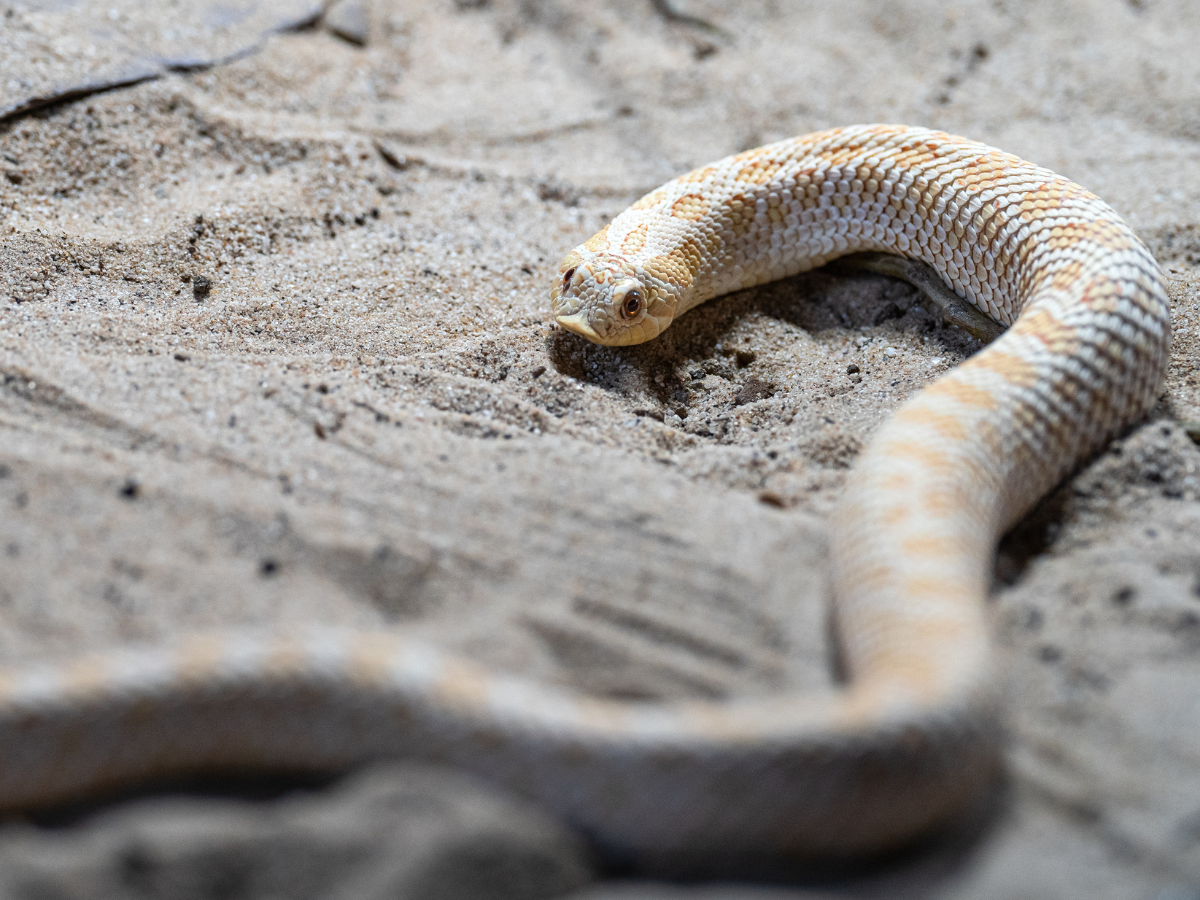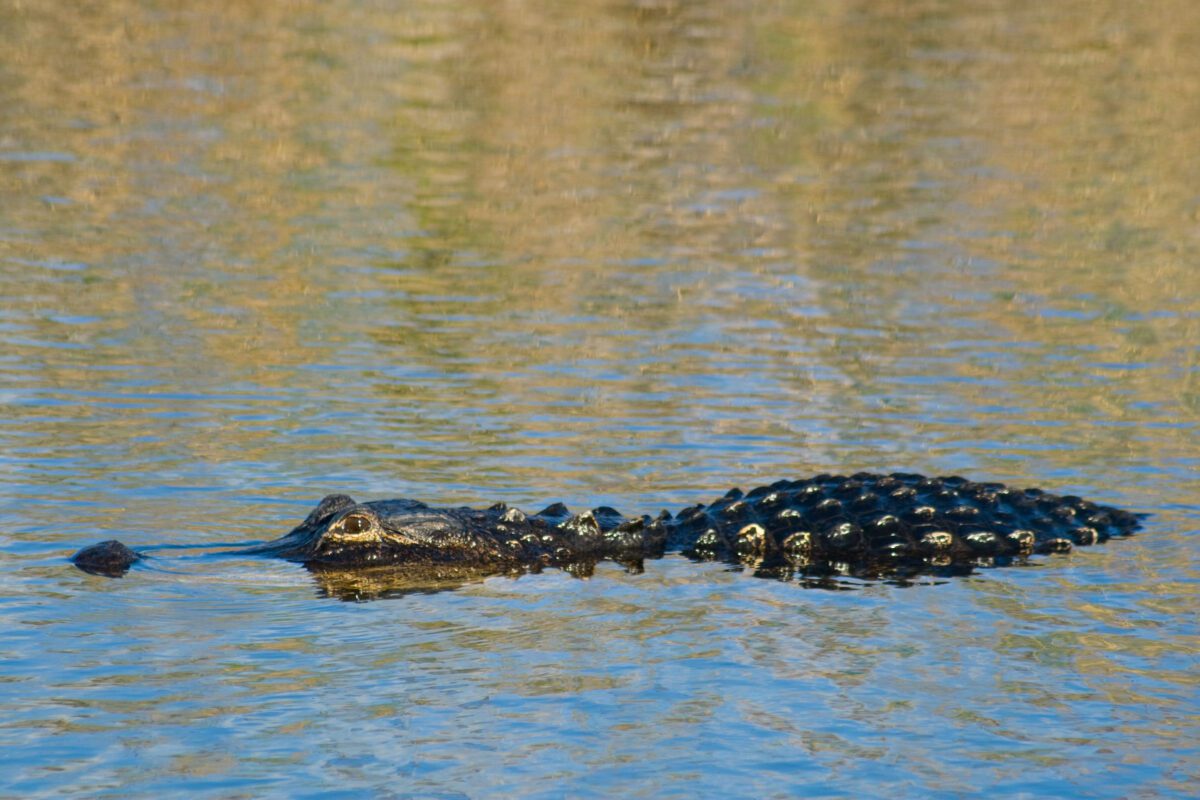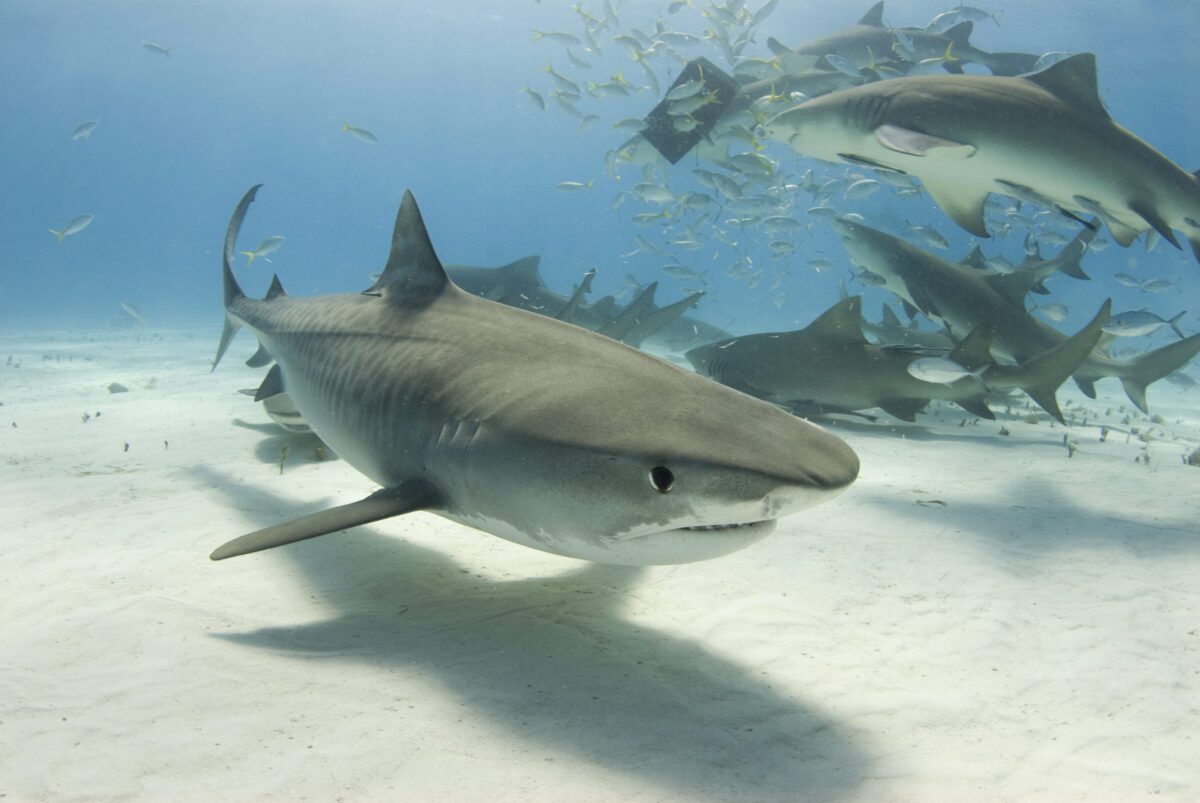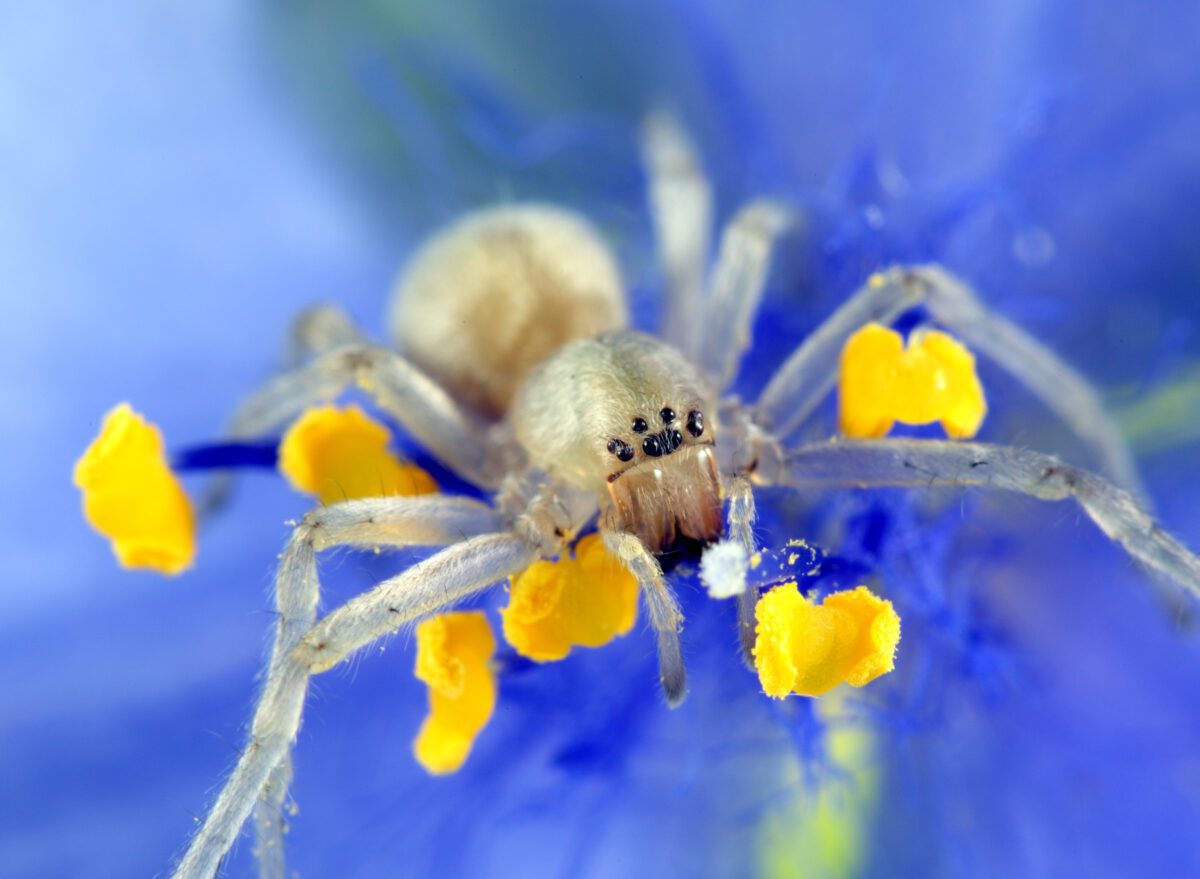The United States is home to plenty of dangerous animals. Although they’re mainly situated in the wild, animal attacks on people living in urban areas have actually increased in certain parts of the country over the past few years. As the largest state in the continental U.S., there are a lot of dangerous animals in Texas.
The sheer size and vast array of terrain make it habitable for all types of wildlife, including the nastier varieties. Although your chances of encountering a dangerous animal are low, Texas records more animal attack fatalities than any other state. So, tread carefully.

Dangerous Animals In Texas: The Complete Guide
Since the year 2000, it’s estimated that there have been 559 human fatalities from animal attacks in Texas. That’s over 240 more than California, which ranks second on the list of fatal attacks in the U.S. But you must also consider that Texas has a population of over 30 million people.
When you crunch the numbers, you’ll realize that your chances of running into a dangerous animal are one in over 50,000. So, there’s no need to be overly concerned about your safety from wild animals in the Lone Star State. Yes, urban attacks have increased nationwide, but the numbers are still extremely low.
The majority of attacks and encounters happen in the wild where people should be aware that these animals reside. Knowing what animals to look out for and how to protect yourself from them goes a long way in staying safe. We highly recommend staying away from known animal habitats if you’re inexperienced in the outdoors.
It’s also important to consider that dangerous animals come in all shapes and sizes. We all understand that mountain lions and gators are not to be messed with but we often forget about smaller critters and less threatening foes, like spiders or ants. So, to increase your awareness of dangerous animals in Texas, here’s our guide.
We’re not trying to scare you, we promise!
Snakes
You probably could’ve guessed that snakes would appear on this list. Now, here’s the thing, there are only four types of venomous snakes in Texas so if you see a small garden snake slithering around your backyard, there’s no need to freak out.
The venomous snakes you should be concerned about are rattlesnakes, cottonmouths, coral snakes, and copperheads. Within these types, there are several different breeds, with some more potent than others. If you’re concerned about them, research what snakes are in the area of Texas you’re staying and note their appearance.
Some of the serpents you need to look out for are the red and yellow coral snakes, the diamondback rattlesnake (with distinctive diamond-like patterned scales), and the timber rattlesnake. The timber rattlesnake has a grayish or greenish body has brown or rust-colored strips all along it.
Before you cancel your trip to Texas, let’s take a quick look at the statistics. There are only around 7,000 venomous bites in the entire U.S. every year. To give that some context, that’s around 0.002% of the population. Furthermore, only one in 500 is fatal. In Texas, annual deaths from snake bites range from 0 to 2 every year.
Approximately half of all snake bites in the country are dry, meaning no venom is injected. Even still, antivenom is available in snake-filled zones so venomous bites can be treated. While you need to be careful, snakes aren’t a major problem for humans in Texas. But take note of the nearest medical facilities in you’re in the wilderness.

Alligators
We’ve all heard horror stories about alligator attacks. While they happen from time to time, they are quite rare. What’s more, most attacks are avoidable. We know where alligators reside so when you’re in these areas, you must take all necessary precautions, especially with children and pets.
It may come as a surprise to learn that there are approximately half a million alligators throughout the state of Texas. They’re among the most dangerous animals in East Texas but can be found in other areas toward the north of the state. Bayous, swamps, and lakes are their primary habitats and these areas are generally signposted with warnings.
For the most part, humans and alligators can coexist without too many issues. If you steer clear of them, they probably won’t bother you. But getting too close can make you a target. If you know of alligators in the area, keep your distance from their hang-out spots and stay alert.
If you do encounter a gator, back away slowly. Surprisingly, alligators are fearful of humans so there’s a strong chance they’ll be the first to retreat. But, because people sometimes feed them, some gators no longer have this fear. If you hear a gator hissing, you’re in the danger zone so be sure to step away.
Despite the healthy population, there has only been a single fatal attack from a gator in Texas since the year 1836. The 179-year streak ended in 2015 after a local man in Orange, TX, went for a late-night swim in a bayou that was known to be alligator infested.
The most densely populated regions for alligators are along the gulf coast. So, if you’re vacationing along eastern Texas, beware that gaters are some of the most dangerous animals in the Galveston Beach area. Sightings are rare on the beach itself, but gators live in the surrounding areas.
Sharks
In June of 1975, the movie “Jaws” was released, sparking a newfound fear of sharks among Americans. While there’s good reason to be scared of sharks, attacks and even encounters are extremely rare. Do sharks live along the U.S. coast? Yes. Are sharks dangerous? Yes, absolutely.
But your chances of being attacked by one are slim, to say the least. In fact, shark attacks are very uncommon worldwide. The sharks most responsible for human attacks, like Great Whites or Tiger Sharks, spend most of their time miles from the coast. However, they pop up near the shores from time to time.
On average, around 10 people die from shark attacks every year around the globe. In the United States, there’s a fatal shark attack once every two years. In 2021, there were almost 50 reports of unprovoked encounters with sharks. However, none occurred in Texas, and that’s the norm.

The last known shark attack in Texas occurred off the coast of Galveston, near Crystal Beach. A man was bitten in the leg but lived to tell the tale. Unfortunately, it can be hard to track down what sharks actually attack people as they’re often long gone by the time helicopters or coastguard patrols arrive on the scene.
The majority of sharks found in Texas are in the Gulf of Mexico. Shark species are known to travel hundreds of miles over short periods so depending on the time of year, you may or may not have a chance of spotting one. Here’s a list of known shark species found in Texas waters:
- Bull shark
- Spinner shark
- Finetooth shark
- Sandbar shark
- Blacktip shark
- Scalloped Hammerhead shark
- Bonnethead shark
- Caribbean Sharpnose shark
- Whale shark
- Tiger shark
Spiders
If you’ve got arachnophobia (fear of spiders), the bad news is that there are around 1,000 spider species in Texas. The good news is that only four are venomous and realistically, you only need to be concerned about two. Although bites usually aren’t deadly, they certainly pack a punch.
So let’s start with the scary ones:
The Black Widow: arguably the most infamous spider species in the world, the Black Widow is one of the most dangerous in the state. These spiders get their name from their mating habits. Once they finish mating, the female eats the male. Unsurprisingly, the female is the one you need to look out for.
Male black widows are largely harmless. They’re around a quarter of an inch long and are more of a brownish color than black. The females, on the other hand, are a full inch long with jet-black bodies. They’re distinguished by their hourglass markings on their underbellies (usually red or yellow).
A bite from a female can be quite painful, but that’s not the worst part. Over time, their venom can trigger other symptoms, like nausea and muscle cramping. In more extreme cases, people who are bitten experience diaphragm paralysis, causing breathing difficulties.
Thankfully, there have been no recorded deaths from Black Widow bites in the entire U.S. That said, if you suspect you’ve been bitten, seek medical attention immediately to offset the effects. As outdoor spiders, Black Widows are mainly found in wood piles, debris, or garden sheds.
Brown Recluse: although Black Widows are more well known, Brown Recluses are regarded as the most dangerous spider species in Texas. They have slender, quarter-inch bodies with long legs that can grow up to an entire inch. They’re differentiated by their violin-shaped markings and large mouths.
Brown Recluses leave a nasty bite. Their venom can erode the tissue around the bite site, leaving a foul mark. If left untreated, their bites can get infected. Although it’s rare, there have been several reported deaths as a result of Brown Recluse bites. Fortunately, Brown Recluses prefer to keep their distance from people.
That said, they tend to reside indoors, in low-traffic areas, such as basements or attics. So, be sure to do a quick reconnaissance before digging out the holiday decorations.

Yellow Sac Spiders: these are small yet aggressive spiders that are recognized by their yellow or light brown bodies. They also have long, spindly legs. Yellow Sacs are extremely protective of their eggs, hence why they’re so aggressive. However, their stings are similar to that of a wasp or bee.
Yellow Sacs prefer the indoors and people frequently come across them in bundles of clothing or bedding. This is where most bites occur.
Brown Widows: these relatively unknown spiders have the potential to be far more deadly than Black Widows. They have a rather menacing appearance with an orange hourglass marking on their underside. Aside from that, they’re mostly brown, tan, and cream-colored.
Brown Widows possess far more potent venom than Black Widows. But here’s the thing. They don’t inject much venom when they bite. Furthermore, they’re nonaggressive by nature and rarely attack. If you are bitten, the most common reaction is mild pain and redness. But there are no recorded deaths due to their bites.
This species is found outdoors in places like garden sheds, old tires, or empty crevices like mailboxes. Although, they’re often spotted out in the open when nest-building.
Mountain Lions
The mysterious mountain lion, or Puma concolor, has a stable population in Texas. However, the precise number of these wild cats is unknown. They reside in remote areas, mainly in the Trans-Pecos. But they have been spotted in the south Texas bushlands and the Hill Country.
By nature, mountain lions are shy and unconfrontational. Since the 1980s, there have only been four attacks on people in Texas. However, each of these was in remote locations in the west of the state and none were fatal. But don’t get it twisted, mountain lions are killers.
The males can weigh up to 232 pounds and the females can get as big as 132 pounds. Although, it’s believed that the Texas population is generally on the smaller side. If you encounter one, make yourself big, yell at it assertively, throw rocks or sticks, and don’t turn your back. Mountain lions can be deterred by aggression.
Scorpions
Scorpions are known to be dangerous arachnids and many species are venomous. You’ll be glad to learn that Texas doesn’t host many of the more deadly species in the U.S. But, that doesn’t mean a sting won’t hurt. And let’s face it, they come across as scary creatures.
The scorpions found in Texas can leave a painful sting but their bites aren’t considered medically dangerous. A sting can cause pain and inflammation which you can treat with ice. However, if a bite causes an allergic reaction, seek medical attention right away to avoid complications.
Whitetail Deer
Whitetail deer are silent killers in the state of Texas. Timid by nature, they’re not usually a threat in terms of attacks or aggression. The real danger with deer is when you’re behind the wheel. They’re known to dart across roads unexpectedly, often causing serious accidents.
Whitetail deer, along with other species, are the number one type of wild animal that causes road accidents in the entire state. There are usually plenty of signposts to warn you but as a rule of thumb, always be alert to wildlife that could cross the road at any time.
Honorable Mentions
Some other dangerous animals in Texas that you should keep an eye out for include:
- Nine-Banded Armadillo
- Kissing Bugs
- Fire Ants
- Flesh-Eating Bacteria
- Brain-Eating Amoebas
Animal Most Likely To Kill You In Texas
Now, at this point, you may be shaking in fear at the prospect of running into one of the aforementioned deadly animals. But, when it comes to what animals are responsible for killing the most amount of people, you might be a little surprised.
You see, most people who die from an animal aren’t killed by the most venomous or biggest animals in Texas. They usually die because they have an allergic reaction to a bite or sting. So, bees, wasps, or hornets are most likely to kill you. An allergic reaction can cause your body to go into anaphylactic shock.
References
- Dangerous animal attack statistics: vividmaps.com
- Snakebite statistics: tpwd.texas.gov
- Alligators at Galveston Beach galvestontx.gov
- Shark attack statistics: worldanimalfoundation.org
- Texas mountain lions: texas.gov
Christian Linden is a seasoned writer and contributor at Texas View, specializing in topics that resonate with the Texan community. With over a decade of experience in journalism, Christian brings a wealth of knowledge in local politics, culture, and lifestyle. He holds a Bachelor's degree in Communications from the University of Texas. When he's not writing, Christian enjoys spending weekends traveling across Texas with his family, exploring everything from bustling cities to serene landscapes.











